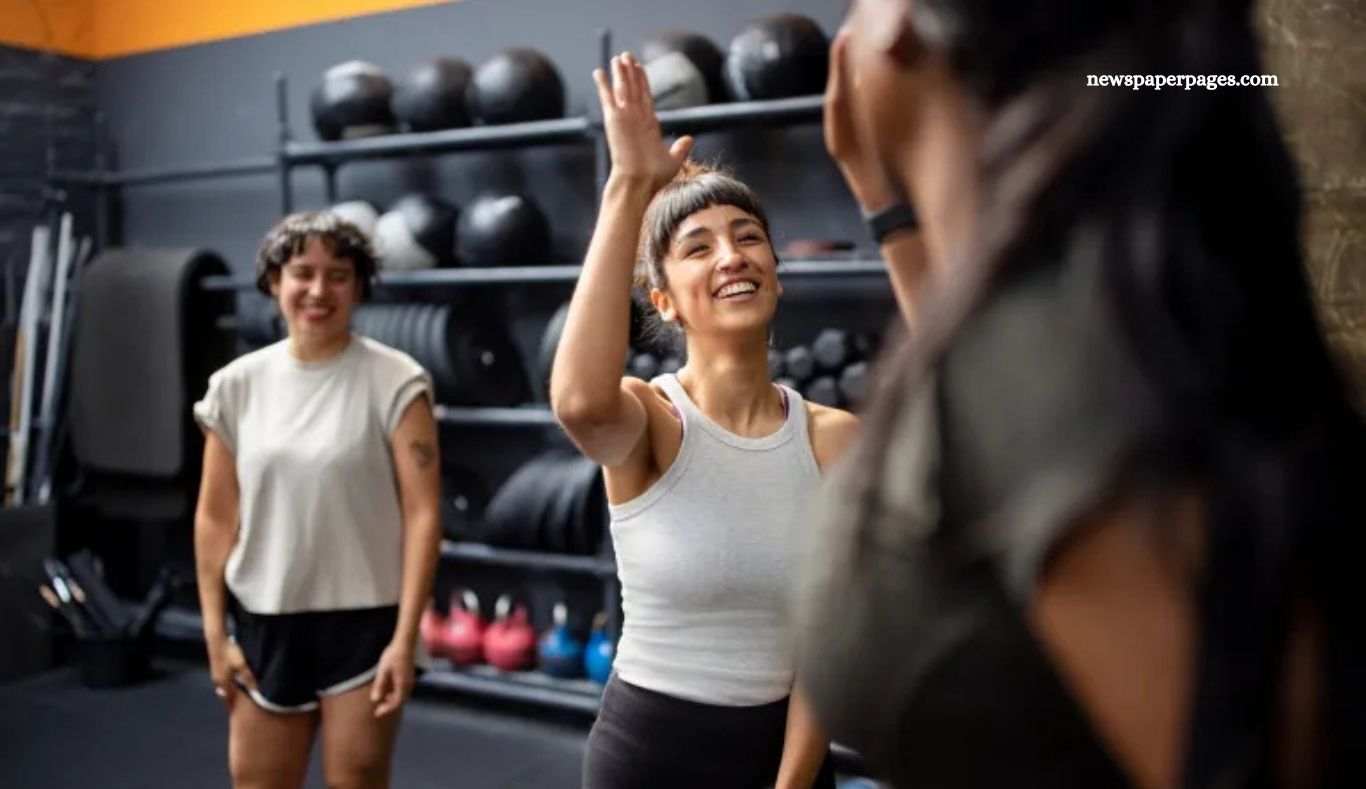You may have caught a now-deleted TikTok where a Pilates instructor claimed, “If you’re 200 pounds, you shouldn’t be in a Pilates class.” Yikes. Comments like that highlight how exclusionary attitudes can discourage people—especially those in larger bodies—Truly Inclusive gym, even if they know fitness is for everyone.
Unfortunately, that video isn’t an isolated case. Many have shared their own negative gym experiences online. One woman, who describes herself as “moderately fit,” posted about a group fitness class where the instructor skipped exercise demos and had participants run in the dark. A Reddit user said their “beginner class” was anything but. And a YouTuber shared feeling singled out when a Pilates instructor made racially insensitive remarks during class.
So—should you just avoid gyms altogether? Definitely not. While some spaces miss the mark, many gyms do foster inclusive, supportive environments. Below, fitness pros share their top picks for gyms that welcome everyone—plus the subtle green flags to look for when choosing your own.
Read More: Do Elliptical Workouts Count as Daily Steps? Experts Explain
The 8 best inclusive gyms to try out
8 Inclusive Gyms With Subtle Green Flags, According to Fitness Expert
Whether you’re up for high-energy Zumba, focused strength training, or a relaxing yoga session, these inclusive gyms offer judgment-free environments and supportive communities. Here’s where to go—and what to expect.
YMC
Certified personal trainer Rachel Trotta calls the YMCA her “absolute favorite gym.” As a member herself, she values its welcoming atmosphere and diversity—qualities she wants modeled for her daughter.
Pros:
- Accessible nationwide
- Welcomes all ages, backgrounds, and fitness levels
Cons:
- Membership costs can be high (though scholarships exist)
- Limited weekend hours at some locations
Adaptive Training Foundation
This Texas-based nonprofit serves veterans and individuals with physical disabilities. Founder David Vobora emphasizes that “if you have a body, you’re an athlete.”
Pros:
- No membership fees for accepted applicants
- Supportive, community-focused training
Cons:
- Only one location
- Staff may reflect traditional fitness norms, which could be off-putting to some
Club Pilat
Club Pilates aims to make Pilates feel accessible and unintimidating. With tiered classes and beginner-friendly options, President Tianna Strateman highlights how instructors personalize sessions for every fitness level.
Pros:
- Multiple nationwide locations
- Inclusive class formats and friendly staff
Cons:
- Coaching quality can vary by instructor
- Limited hands-on corrections in class
LionHeart Gy
Located in California, LionHeart Gym is known for its personalized coaching and welcoming vibe. Co-owner Chelsea Kershaw says their approach focuses on “empowerment over ego.”
Pros:
- Diverse class offerings (cardio, strength, mobility)
- Supportive trainers and community feel
Cons:
- Only one location
- Trainers may appear stereotypically “fit,” which might deter some
Pure Barre
This ballet-inspired workout offers low-impact, accessible sessions with strong community support. Strateman praises the inclusive teaching style and progress-focused structure.
Pros:
- Gentle on joints and adaptable for all levels
- Available in many U.S. cities
Cons:
- Less cardio-intensive
- Pricey memberships
High Fives Foundation – CR Johnson Healing Cente
Ideal for those recovering from major injuries, this California nonprofit helps athletes with disabilities explore adaptive adventure sports like skiing and snowboarding.
Pros:
- Offers hope and purpose through adaptive sports
- Strong emphasis on recovery and community
Cons:
- Not suitable for those without injury-related needs
- Limited to one facility
YogaSix
YogaSix prioritizes accessibility and body neutrality. Class names like “Yoga 101” and “Restore” invite beginners and promote stress-free practice.
Pros:
- Welcoming to all skill levels
- Emphasis on self-care, not performance
Cons:
- Classes may feel too gentle for advanced yogis
- Limited time slots at some studios
[solidcore]
This Pilates-inspired studio emphasizes strength, not aesthetics. CEO Bryan Myers leads with inclusivity, and coaches use affirming, body-neutral language.
Pros:
- Blue-lit studios and no-photo policy encourage focus
- Broad class variety and beginner support
Cons:
- Some locations use concrete flooring for mat sessions
- Coaching style can vary
What to look for in an inclusive gym environment
There’s no such thing as a perfect gym—but some are far more welcoming than others. According to fitness experts, the best gyms go beyond trendy slogans or aesthetics. They create spaces where everyone feels safe, supported, and seen. Here are the subtle green flags to look for when searching for an inclusive, healthy gym.
Diversity Is Visible and Genuine
Representation matters—especially when it’s real. “You’ll know a gym is inclusive when there’s diversity among staff and clients across races, body types, ages, abilities, and gender identities,” says Tianna Strateman, president at Club Pilates.
This goes beyond marketing—it should feel part of the gym’s culture. “As a Black woman, seeing someone who looks like me sends a powerful message: I belong here,” adds Triana Brown, [solidcore]’s director of talent.
Modifications Are Encouraged, Not Shamed
Inclusive instructors offer and normalize modifications—for yoga poses, cardio routines, or strength moves—without framing them as “less than.” It’s a sign they’re focused on accessibility, not perfection.
“If a coach regularly offers multiple versions of an exercise, they’re thinking of different bodies and abilities,” Strateman says.
Toxic Messaging Is Absent
Sometimes, what’s not on display says the most. Inclusive gyms avoid “fitspiration” posters that promote harmful ideas—like equating workouts with earning food or glorifying pain.
“Phrases like ‘no pain, no gain’ or ‘earn your brunch’ send the wrong message,” says trainer Rachel Trotta. Watch out for signs that obsess over weight loss or body composition, too.
Clear, Helpful Instructions Are Everywhere
Not all signage is bad. Look for “how-to” visuals on machines, friendly etiquette reminders, and guides for beginners. Trotta says these practical signs help reduce gym anxiety and boost confidence.
All Levels Are Respected
Great gyms welcome total beginners and seasoned athletes alike. Coaches should support growth with encouragement, not judgment.
“It’s about building a tribe that lifts you up, wherever you’re starting from,” says David Vobora of the Adaptive Training Foundation.
Individuality and Intention Are Celebrated
Every body moves differently, and inclusive gyms honor that. “You’ll hear phrases like ‘Move in a way that feels good for you today’ instead of commands to push harder,” Strateman says.
Brown adds that thoughtful details—like respectful music and coaches engaging before and after class—turn workouts into positive, community-driven experiences.
The bottom line
Truly inclusive gyms exist nationwide—and they’re marked by welcoming instructors, beginner-friendly classes, and judgment-free environments. Look for clear, supportive signage, visible diversity, and instructors who offer respectful modifications. These are all signs you’re in a gym that values people, not just performance.
But remember: actions speak louder than branding. “Inclusivity can be a buzzword,” says trainer Rachel Trotta. “What really matters is who’s showing up and feeling comfortable. If you see a diverse mix of people using the space confidently—that’s your proof.”
What are the signs of an inclusive gym?
Inclusive gyms feature visible diversity, encourage exercise modifications, avoid toxic or appearance-based messaging, and foster a respectful, welcoming culture for all fitness levels.
Why is visible diversity important in a gym setting?
Seeing diversity across instructors, staff, and members—regardless of age, race, gender identity, body type, or ability—sends the message that everyone belongs and is valued.
How do instructors support inclusivity during classes?
Inclusive instructors offer modifications, use affirming and body-neutral language, and prioritize how movement feels rather than how it looks. They create space for different abilities and needs.
What kinds of signage should I look for—or avoid—in a healthy gym?
Look for helpful signs explaining equipment and gym etiquette. Avoid gyms with messaging focused on punishment, weight loss, or “earning” food, which can promote toxic fitness culture.
Are there gyms designed specifically for people with disabilities or adaptive needs?
Yes! Gyms like the Adaptive Training Foundation and High Fives Foundation focus on creating empowering, accessible programs for people with physical disabilities or injuries.
Can beginners feel comfortable in an inclusive gym?
Absolutely. Inclusive gyms welcome all levels with beginner-friendly classes, clear guidance, and respectful coaching that makes everyone feel supported—no matter where they’re starting.
How can I tell if a gym is inclusive before signing up?
Visit the gym in person if possible. Look for diverse clientele, check if staff are approachable and informed, and ask about class modifications. Actions and atmosphere will speak louder than marketing.
Conclusion
Finding an inclusive gym isn’t just about flashy branding or promises on a website—it’s about the environment, the people, and the values that show up in real time. From welcoming signage and diverse representation to instructors who offer modifications and affirm every body, these subtle green flags can help you spot a gym where you’ll feel safe, supported, and inspired.
Ultimately, fitness should be empowering—not intimidating. And with more gyms embracing inclusivity as a core value, you’re more likely than ever to find a space that meets you exactly where you are. Trust what you see, how you feel, and whether the space truly celebrates every individual—because that’s what real fitness community looks like.

